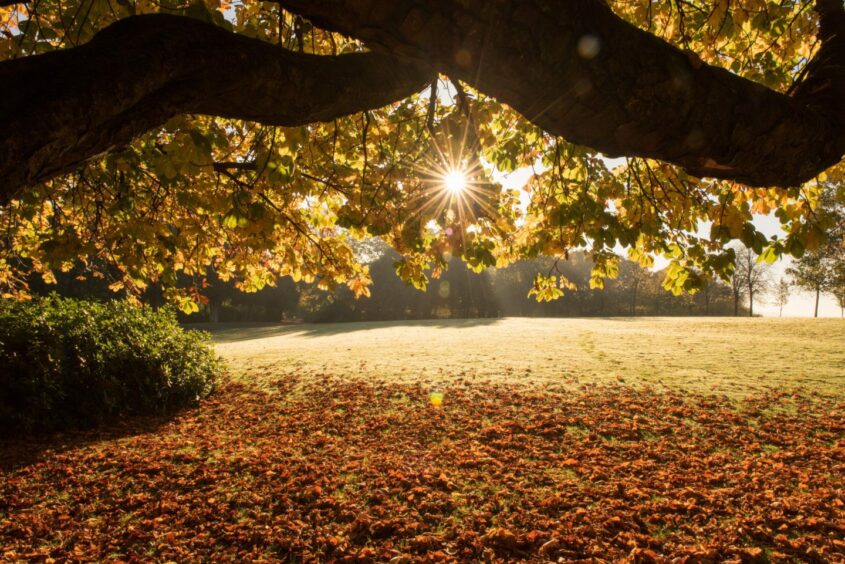Trees lined the streets I grew up in, and grew in the parks I played in.
However, as the years have gone, by I’ve found they’ve become more important to me than just being in the background of my life.
They grow so slow and steadily I feel that we actually fail to notice them, which is why I think we take them for granted.
That may sound daft considering how big some trees can get. But we don’t really see them grow like a herbaceous plant, coming out from the ground in spring to reach a summer display.
They just always seem be there, not looking like they are doing very much. Yet they are still very much a constant in our lives.
I have been a professional gardener for a few years now, working outdoors in their presence for more than half my life, and I like to think I now have a deeper understanding and appreciation of them.
The influence of trees
In the public parks, botanical gardens and historic houses where I’ve spent my career, they dominate the landscape and influence the cultivated space underneath.
During winter their skeleton shapes mark the skyline on a backdrop of the low, winter sun.
In spring, as the natural world bursts back to life, so do the trees as their fresh leaves unfurl from the buds.
In the weeks ahead they produce blossom, providing bursts of colour such as the white through to pink of flowering cherries.
The large, dense canopies of mature beech, oak and sycamore trees cast shade, provide cooler conditions on hot summer days and shelter from wind. This affects the choice of plants available and suitable to grow in the garden that surrounds them.
And finally, the swan song of the growing season as the deciduous trees start to shut down to rest, and the leaves change in colour creating a dramatic display of colour in autumn.
Essential in the big picture
Taking a look at the bigger picture, trees are essential as a source of food, place of shelter and as a site to nest for much of our native birds, mammals and insects.
Practically, they provide the timber required for construction and crucially, they are the lungs of our earth, cleaning the air that we breath.
I would say I’ve made enough of a case already for why trees are one of, if not THE most valuable genus in the plant kingdom, yet we also use the symbolism of a tree’s longevity to mark special occasions and commemorate special people.
You can recognise such a tree in parks, the grounds of a hospitals and schools. At the base of such trees outside some of our historic buildings is a plaque, giving the commemorative details.
The passing of the Queen
We’ve just seen the sad passing of Queen Elizabeth II. Her death and how we will come to remember her will be personal to us all.
I will always remember her through the many trees that she planted. This may have been an inadvertent result of her work at the many places she visited, but because of this I will always think of her as the most prolific tree planter of all time.
My own place of work at Scone Palace in Perth is a perfect example of this. Her reign was so long she has actually left her mark on the landscape there on two occasions.
Her most recent visit to the crowning place of Scottish royalty was back in 2012, just six months into me starting my position as Head Gardene. She paid a visit during her Diamond Jubilee celebrations.
A history through trees
Her Majesty planted a pedunculate oak, which is a native tree, but I do prefer the purple-leaved Norway Maple she planted way back in 1967.
Over 50 years later it is now a beautifully shaped tree situated outside the library of the Palace, under-planted with the matching colours of white and pink from the ivy-leaved Cyclamen, C. hederifolium.
Already these trees have become a focal point for memories of this remarkable woman, however I wonder how people in 400 years time will view these trees?
For me this isn’t difficult to imagine at all, as both grow in the shadow of a tree planted by King James VI of Scotland, way back in the year 1606.
I was never the sharpest at school but this has certainly brought history to life for me.
The Queen’s Green Canopy
Like many others across the country we at Scone Palace took part in the Queen’s Green Canopy, a nationwide initiative to plant a tree – or in our case seven, one for each decade – to mark Her Majesty’s Platinum Jubilee. This scheme is still open to take part in if you have yet to do so.
Better still why not bring this idea closer to home and our own family and friends.
Planting a tree is a great way to remember the kings and queens in our own family for generations to come.




Conversation